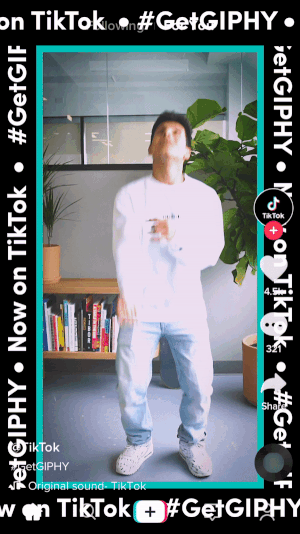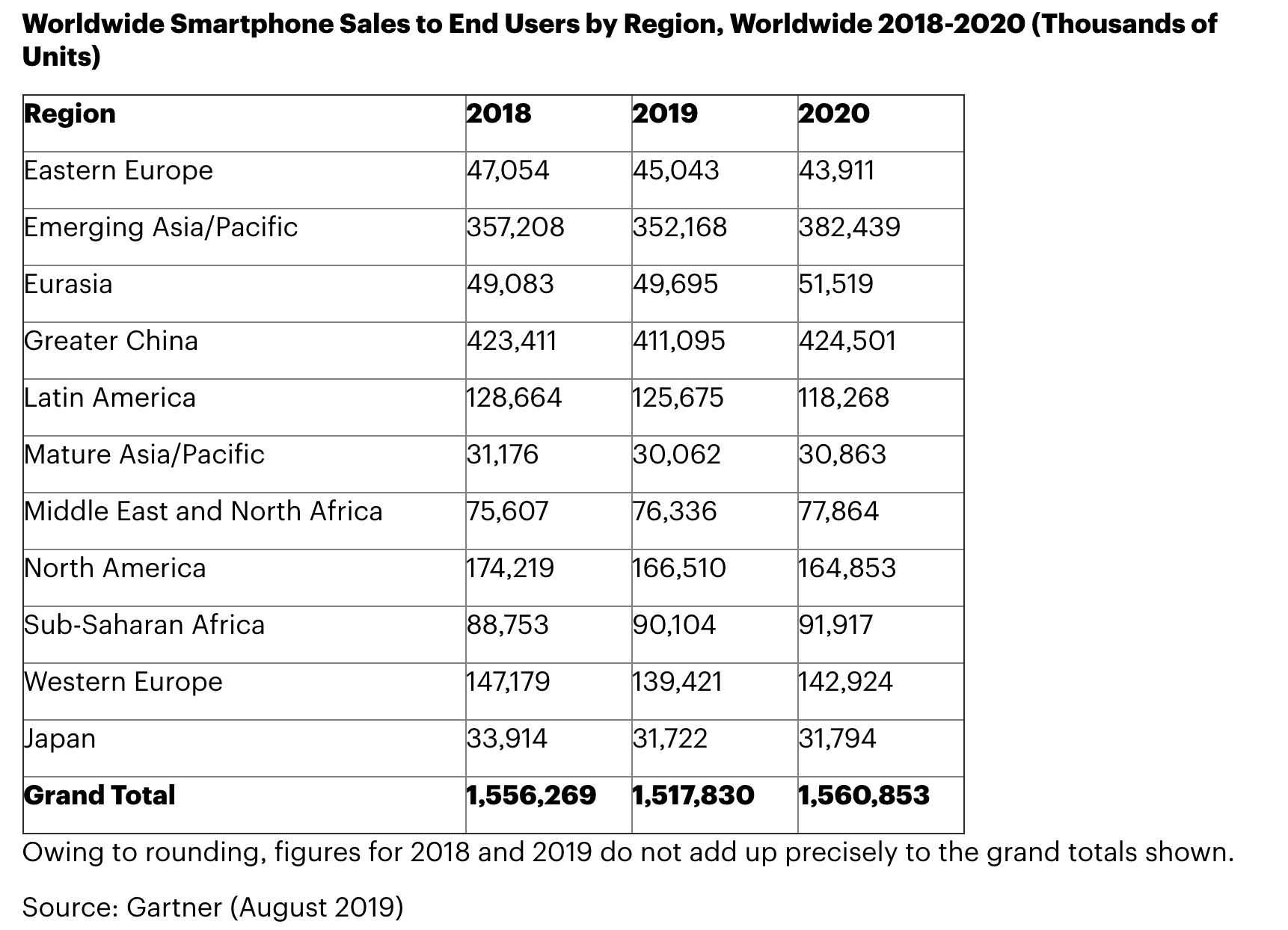TikTok is the breakout hit in social media apps at the moment — it’s currently ranked first in entertainment, and 12th overall in terms of download popularity on iOS, and 8th on Android in the US — and today it’s starting a partnership that should give it an even wider profile, with the added benefit of bring another key tool in for creators on the platform to use: the app is now working with Giphy, the GIF platform, to make it possible to import Giphy GIFs, specifically its animated Stickers, into TikTok posts, and at the same time, to be able to create new GIFs for Giphy based on what you are doing in TikTok.
 TikTok tells me that this is not a commercial deal: there’s no money exchanging hands, a spokesperson said in an email. “We’re excited to continue enhancing our creative tools with this integration,” she continued, “as well as share some of TikTok’s most iconic memes with GIPHY keyboards everywhere!”
TikTok tells me that this is not a commercial deal: there’s no money exchanging hands, a spokesperson said in an email. “We’re excited to continue enhancing our creative tools with this integration,” she continued, “as well as share some of TikTok’s most iconic memes with GIPHY keyboards everywhere!”
The spokesperson said that this is the first partnership for TikTok — owned by China’s Bytedance — to integrate a third-party GIF/Sticker content into its platform. On the side of Giphy, though, this is the latest of a string of integrations that it’s used over the years to expand its reach. You can call up Giphy GIFs in Twitch, enterprise apps like Slack and Quip, and (after ironing out a little controversy with how well GIFs were being vetted) on Snapchat and Instagram, among others.
(Note: TikTok does have deals with other kinds of third parties, though, for example music labels and publishers, who are apparently in the process of rethinking those agreements, in light of just how huge TikTok has become, and its role as the primary place where music is being played, heard and appropriated.)
TikTok will be putting the Giphy integration front and center into the app, with creators able to add a sticker to a post by hitting a Giphy button to call up a directory. It sounds like an algorithm will surface a pared-down selection for users: TikTok said that it worked with Giphy Studios to create stickers that reflect some of the more popular memes and hashtags on TikTok (eg #oddlysatisfying or a dog sticker). You can also search on #getGiphy to find more.
At the same time, TikTok’s using the integration to give creators on its platform a little more amplification: the most popular stickers based on TikTok memes will also get surfaced now on Giphy itself, and wherever it is integrated. You find these by searching on #TikTok in the Giphy libarary search bar. At a time when there is a lot of heated competition to bring the most popular creators to do their best original work on a specific platform, this potentially could be one way to help woo them to TikTok over others.
But that’s not to say that anyone’s Giphy stickers will appear anywhere that Giphy is.
 “Giphy users can create and upload their own Stickers to the platform. However, their content won’t be indexed in Giphy’s search and will not show up in third party apps like TikTok unless they are a verified channel on Giphy,” a spokesperson told us. “Giphy Studios has worked with a wide array of brands and partners, such as TikTok, to create custom content, which they do on a case by case basis. TikTok worked with the creators and the Giphy Studios team to turn popular TikTok memes into GIFs. To create this content, we invited a group of creative, funny, and diverse creators, @DreaKnowBest, @Gabe, @BenoftheWeek who are excited to immortalize TikTok memes in GIF form.”
“Giphy users can create and upload their own Stickers to the platform. However, their content won’t be indexed in Giphy’s search and will not show up in third party apps like TikTok unless they are a verified channel on Giphy,” a spokesperson told us. “Giphy Studios has worked with a wide array of brands and partners, such as TikTok, to create custom content, which they do on a case by case basis. TikTok worked with the creators and the Giphy Studios team to turn popular TikTok memes into GIFs. To create this content, we invited a group of creative, funny, and diverse creators, @DreaKnowBest, @Gabe, @BenoftheWeek who are excited to immortalize TikTok memes in GIF form.”
Doubtless if this takes off, there will be more added to that mix.
TikTok doesn’t share how many users it currently has on its platform, but the app — and before that, its predecessor Musically — has proven to be a massively popular channel for sharing fun and occasionally sentimental short videos set to music. But even that loose remit, which has attracted so many users, has its limitations. If you browse enough TikTok, a lot of the posts start to meld together. Adding in a sticker option gives a little extra nudge of differentiation.
There is a longer-term option that this brings to the platform, too: While TikTok has yet to turn the advertising taps on to full volume, stickers can become an obvious way of bringing in more #brands and messaging in a way that keeps the fun ethos of the platform intact.
 Read Full Article
Read Full Article


 TikTok tells me that this is not a commercial deal: there’s no money exchanging hands, a spokesperson said in an email. “We’re excited to continue enhancing our creative tools with this integration,” she continued, “as well as share some of TikTok’s most iconic memes with GIPHY keyboards everywhere!”
TikTok tells me that this is not a commercial deal: there’s no money exchanging hands, a spokesperson said in an email. “We’re excited to continue enhancing our creative tools with this integration,” she continued, “as well as share some of TikTok’s most iconic memes with GIPHY keyboards everywhere!” “Giphy users can create and upload their own Stickers to the platform. However, their content won’t be indexed in Giphy’s search and will not show up in third party apps like TikTok unless they are a verified channel on Giphy,” a spokesperson told us. “Giphy Studios has worked with a wide array of brands and partners, such as TikTok, to create custom content, which they do on a case by case basis. TikTok worked with the creators and the Giphy Studios team to turn popular TikTok memes into GIFs. To create this content, we invited a group of creative, funny, and diverse creators, @DreaKnowBest, @Gabe, @BenoftheWeek who are excited to immortalize TikTok memes in GIF form.”
“Giphy users can create and upload their own Stickers to the platform. However, their content won’t be indexed in Giphy’s search and will not show up in third party apps like TikTok unless they are a verified channel on Giphy,” a spokesperson told us. “Giphy Studios has worked with a wide array of brands and partners, such as TikTok, to create custom content, which they do on a case by case basis. TikTok worked with the creators and the Giphy Studios team to turn popular TikTok memes into GIFs. To create this content, we invited a group of creative, funny, and diverse creators, @DreaKnowBest, @Gabe, @BenoftheWeek who are excited to immortalize TikTok memes in GIF form.”
